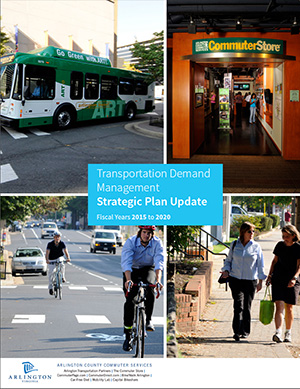By: Michael A. Spotts
From 2012-2015, my adopted hometown of Arlington, VA held an intensive process to update its housing affordability policies, culminating in the passage of an Affordable Housing Master Plan (AHMP) and Implementation Framework. Over the course of three years, I had the honor of serving as the vice-chair of the working group that advised County staff and leadership on this effort. In the end, local advocates, County staff, and the working group were successful in building unanimous support from the County Board for an ambitious set of goals and targets. Notably, the AHMP included the goal of maintaining the County's current economic diversity through increasing the supply of affordable homes. This is a difficult task given that market pressures have significantly decreased the stock of affordable rental housing options, and affordable homeownership opportunities are few and far between.
Since 2015, County staff have worked to implement several of the recommendation included in the Implementation Framework, including recently-passed revisions to the County's Accessory Dwelling Unit (ADU) and parking policies, as well as ongoing efforts to support the preservation of market-rate affordable rental properties. While I have concerns about certain aspects of recent efforts (for example, I believe the new ADU policy is still far too restrictive), they represent steps in the right direction and further demonstrate the commitment of both board and staff to housing affordability.
Yet achieving the AHMP's supply-related goals will require an increase in scale. Success will hinge on the County's ability to continue to remove barriers to more naturally affordable housing types (ADUs, "missing middle" building typologies), as well as dramatically increasing the production of committed affordable housing. Each individual effort takes time and political will.
To help address the issue of scale, a coalition of housing experts and advocates was formed to identify potential policy changes that could increase the production of committed affordable units. The result is a new report - Fulfilling the Promise: Meeting the Production Goals of Arlington's AHMP. This report was presented to the County board and staff in December. The coalition offered a menu of options that the County could consider to ramp up production from current annual levels of approximately 220 units to the nearly 600 units/year that would be necessary to preserve Arlington's current economic diversity.* Importantly, these options include not just funding increases, but also cost-reduction strategies that would allow scarce resources to be stretched further. This is particularly important in the context of changes to the federal tax code that will reduce the amount of subsidy available via the Low Income Housing Tax Credit program. Policy options considered include:
- Reducing site plan conditions for new affordable housing construction
- Waiving permit and tap fees for affordable housing projects
- Reducing use permit conditions for rehabilitation projects
- Modifying bonus density policy
- Pursuing community-serving real estate opportunities
- Offering property tax abatements/exemptions
- Expanding sources of funding for the Affordable Housing Investment Fund
Moving forward, members of the coalition will be available to work with County staff and board to further vet these proposals, and hopefully move closer to achieving the goals of the AHMP.
*If Arlington is successful in removing barriers to more production of naturally affordable housing types, the 600 unit annual target could be lower.


